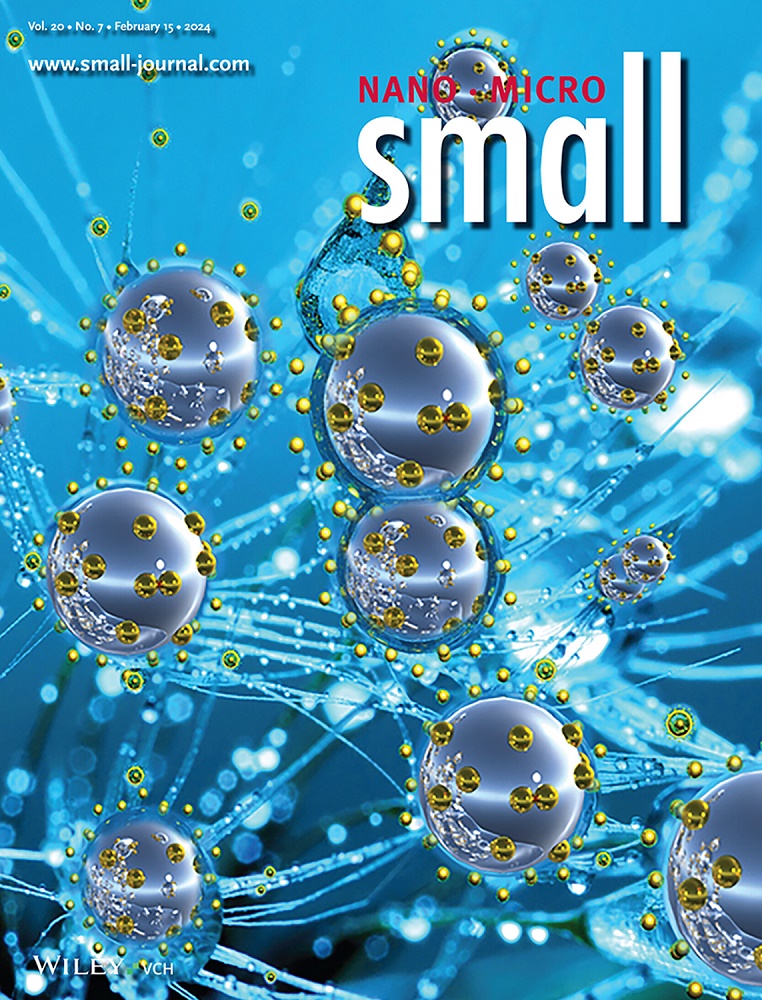AuAgPt三金属合金纳米框架作为高效低温光热治疗的代谢调节剂。
IF 12.1
2区 材料科学
Q1 CHEMISTRY, MULTIDISCIPLINARY
引用次数: 0
摘要
低温光热疗法(PTT)是传统高温光热疗法(PTT)的一个很有前景的替代方案,它可以在温和的温度(<45°C)下最大限度地减少对健康组织的损伤,但其疗效受到热休克蛋白(HSPs)上调和肿瘤消融效率低的显著挑战。本文引入AuAgPt三金属合金纳米框架(AuAgPt NFs)作为代谢调节剂,在近红外照射下进入肿瘤细胞产生稳定的低温光热效应(约42℃),具有较高的催化活性,可以消耗H2O2和浓缩活性氧(ROS),并有效吸附和去除谷胱甘肽(GSH)。此外,细胞内局部加热可扰乱14种代谢物的水平,包括氨基酸、腺嘌呤、尿酸和吡哆醇,导致氧化应激。这些由AuAgPt NFs引起的改变均可下调GPX4和HSPs,增加Bax/Bcl-2比值,最终诱导铁下垂和细胞凋亡,杀死肿瘤细胞。体内实验证明有效的肿瘤消融,同时保持较高的生物安全性。AuAgPt NFs具有催化、吸附和光热特性,可协同调节细胞内代谢物,诱导程序性细胞死亡,为低温PTT策略提供了极具前景的方法。本文章由计算机程序翻译,如有差异,请以英文原文为准。
AuAgPt Trimetallic Alloy Nanoframes as Metabolic Regulators for Highly Efficient Low-Temperature Photothermal Therapy.
Low-temperature photothermal therapy (PTT) offers a promising alternative to traditional high-temperature PTT by minimizing damage to healthy tissues at mild temperatures (<45 °C), yet its efficacy is significantly challenged by the upregulation of heat shock proteins (HSPs) and low tumor ablation efficiency. Here AuAgPt trimetallic alloy nanoframes (AuAgPt NFs) are introduced as metabolic regulators, which can enter tumor cells to generate stable low-temperature photothermal effect (ca. 42 °C) under near-infrared irradiation, possess high catalytic activity to consume H2O2 and concentrate reactive oxygen species (ROS), and efficiently adsorb and remove glutathione (GSH). Furthermore, the intracellular local heating can perturb the levels of 14 metabolites including amino acids, adenine, uric acid and pyridoxine, leading to oxidative stress. All of these alterations caused by AuAgPt NFs can downregulate GPX4 and HSPs, and increase the Bax/Bcl-2 ratio, ultimately inducing ferroptosis and apoptosis to kill tumor cells. In vivo experiments demonstrate effective tumor ablation while maintaining high biosafety profiles. AuAgPt NFs featuring catalytic, adsorptive, and photothermal properties are constructed to synergistically regulate intracellular metabolites for inducing programmed cell death, providing a highly promising low-temperature PTT strategy.
求助全文
通过发布文献求助,成功后即可免费获取论文全文。
去求助
来源期刊

Small
工程技术-材料科学:综合
CiteScore
17.70
自引率
3.80%
发文量
1830
审稿时长
2.1 months
期刊介绍:
Small serves as an exceptional platform for both experimental and theoretical studies in fundamental and applied interdisciplinary research at the nano- and microscale. The journal offers a compelling mix of peer-reviewed Research Articles, Reviews, Perspectives, and Comments.
With a remarkable 2022 Journal Impact Factor of 13.3 (Journal Citation Reports from Clarivate Analytics, 2023), Small remains among the top multidisciplinary journals, covering a wide range of topics at the interface of materials science, chemistry, physics, engineering, medicine, and biology.
Small's readership includes biochemists, biologists, biomedical scientists, chemists, engineers, information technologists, materials scientists, physicists, and theoreticians alike.
 求助内容:
求助内容: 应助结果提醒方式:
应助结果提醒方式:


